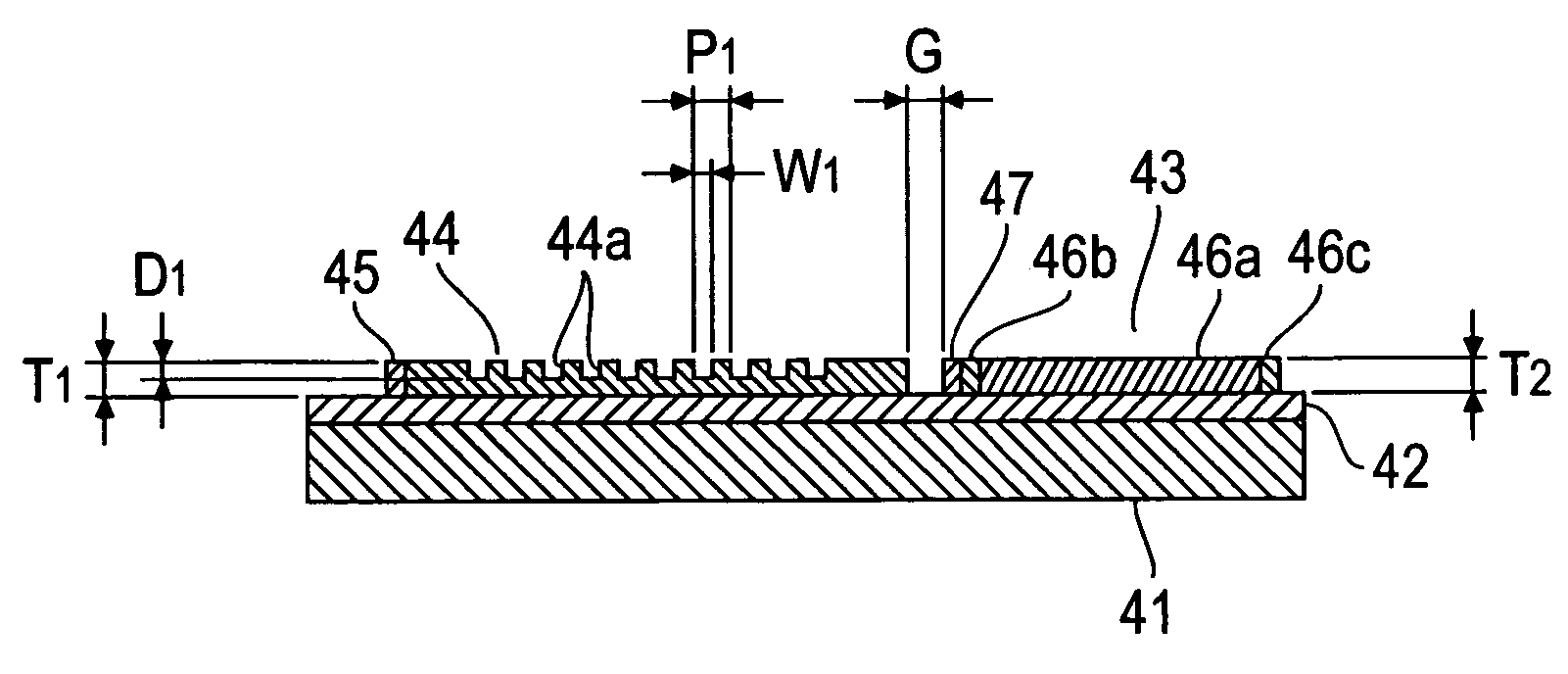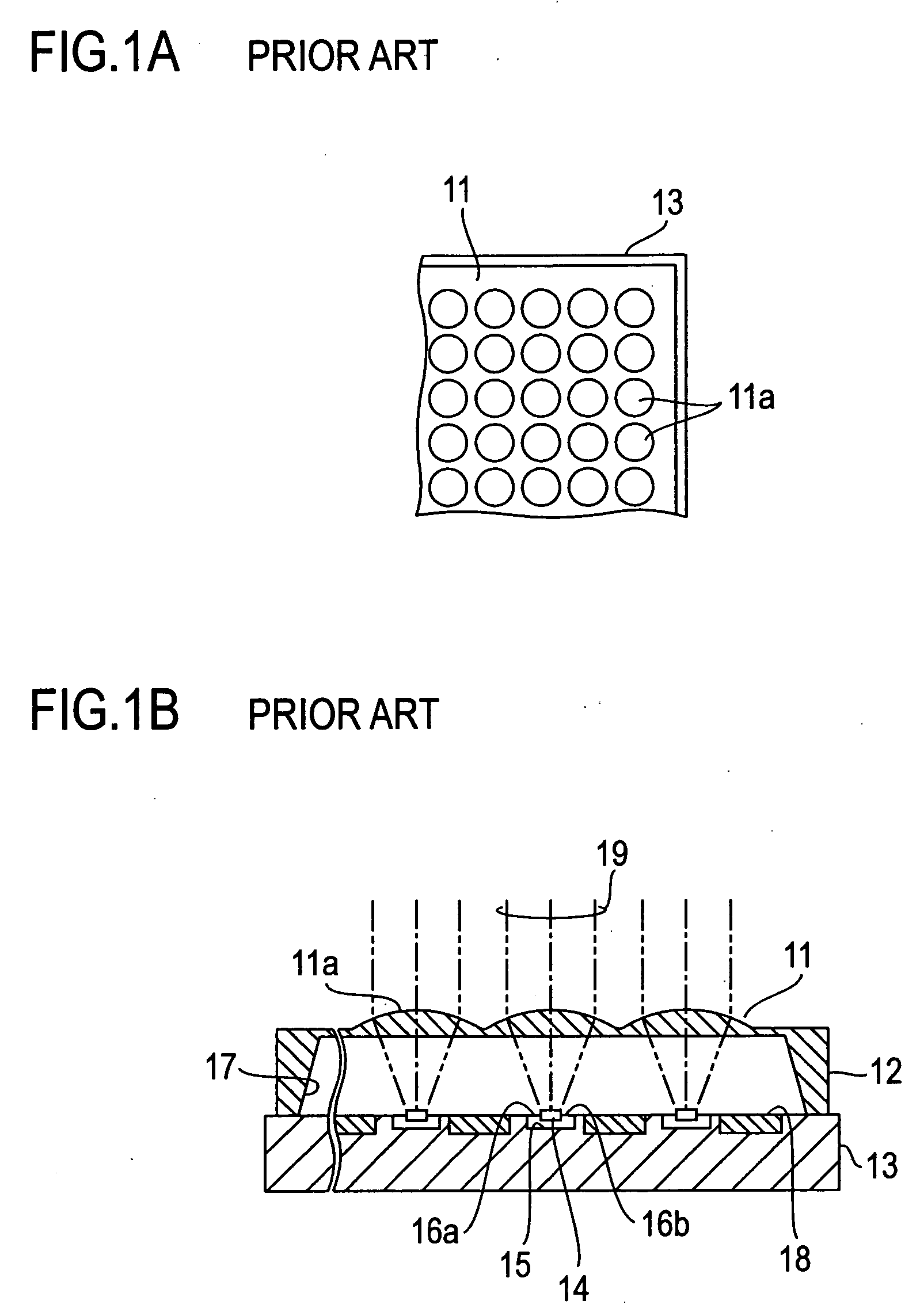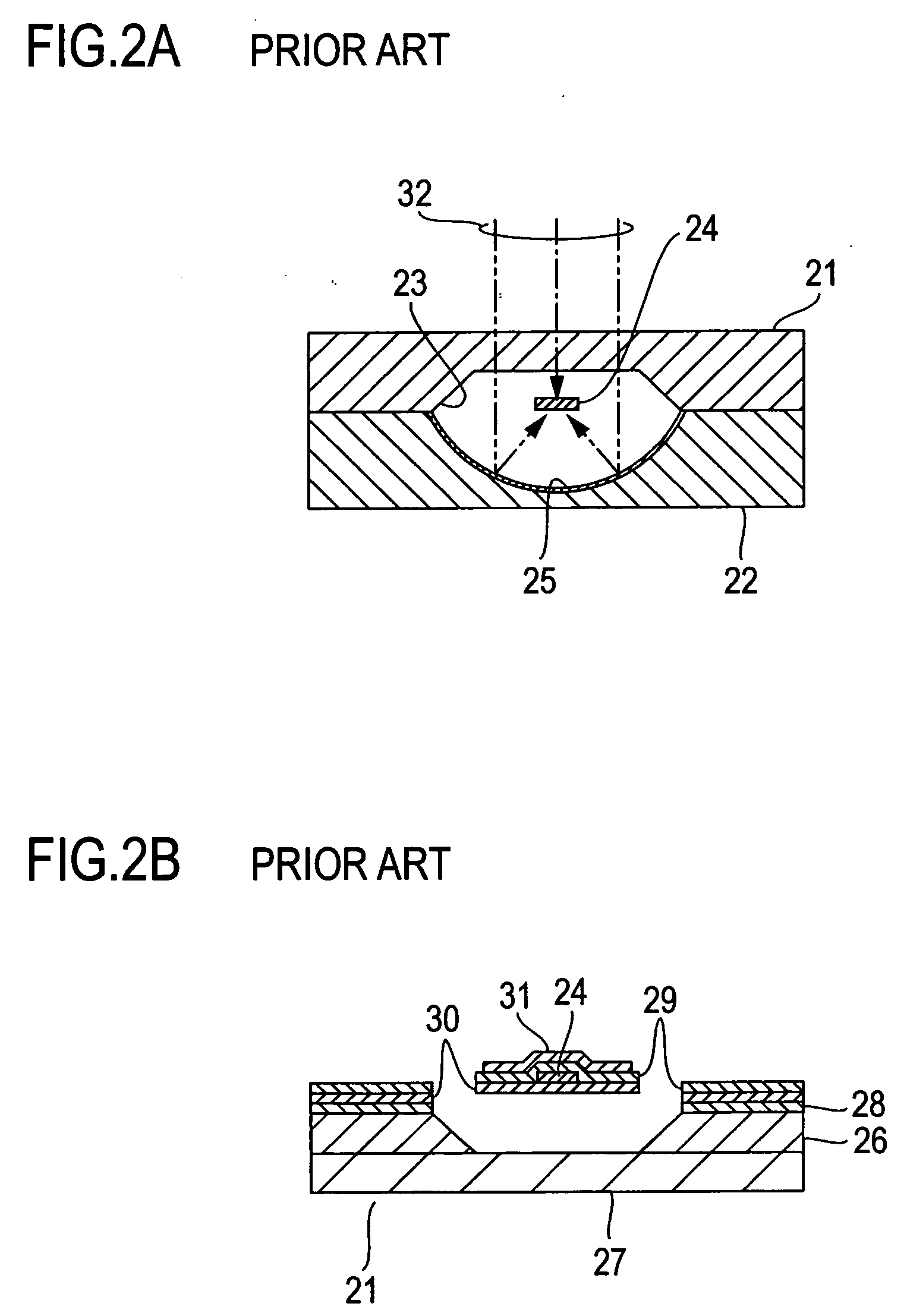Infrared sensor
- Summary
- Abstract
- Description
- Claims
- Application Information
AI Technical Summary
Benefits of technology
Problems solved by technology
Method used
Image
Examples
embodiment 1
[0036]FIGS. 3A and 3B illustrate a first embodiment of the infrared sensor according to the present invention. In this embodiment a silicon (Si) substrate 41 is coated over the entire surface area thereof with an SiO2 film 42 as an electrical and heat insulation film, on which there are disposed side by side an infrared detector 43 for converting infrared light to an electric signal and an optical element 44 for guiding the infrared light to the infrared detector 43.
[0037] The optical element 44 having an array of materials of different refractive indexes is, in this embodiment, a planar optical waveguide having a diffraction grating on the top, and the waveguide is formed of silicon. Straight grooves 44a forming the diffraction grating are formed with a pitch P1=8 μm and each groove has a width W1=4 μm and a depth D1=0.5 μm, and the thickness T1 of the optical element 44 is 2 μm.
[0038] The optical element 44 is formed by: forming a silicon film all over the surface area of the Si...
embodiment 2
[0044]FIGS. 4A and 4B illustrate a second embodiment of the present invention, in which the substrate 41 covered with the SiO2 film 42 of the infrared sensor shown in FIGS. 3A and 3B is substituted with a flexible plastics film 51, on which the infrared detector 43 and the optical element 44 are formed as is the case with the embodiment shown in FIGS. 3A and 3B. In this embodiment the infrared sensor is flexible.
[0045] A check was made on the durability of the infrared sensor to being of the plastics film 51 (on the degree of bending to which the function of the infrared sensor could be maintained), and it was found that the durability of the infrared sensor depends greatly on the thickness of the optical element 44. The reason for this is given below. In the infrared sensor of this embodiment the optical element 44, which occupies a large area, is formed of a semiconductor material such as silicon or dielectric material such as glass transparent to infrared rays, and since these m...
embodiment 3
[0046]FIGS. 5A and 5B illustrate a third embodiment of the present invention, in which there is cut in the substrate 41 a deep groove 52 corresponding to the gap G between the optical element 44 and the infrared detector 43. The deep groove 52 is formed by etching, and it has a width W4 of 10 μm and a depth D4 of 100 μm.
[0047] The provision of the deep groove 52 suppresses the conduction of heat converted by the infrared absorption layer 47 to the optical element 44 and the substrate 41 to provide increased thermal insulation property of the infrared absorption layer 47 to further increase its temperature-rise ratio, permitting implementation of higher sensitivity and faster responsivity. In the manufacture of the infrared sensor according to this embodiment, the infrared detector 43 and the optical element 44 are formed oppositely across the deep groove 52 preformed in the substrate 41.
PUM
 Login to View More
Login to View More Abstract
Description
Claims
Application Information
 Login to View More
Login to View More - R&D
- Intellectual Property
- Life Sciences
- Materials
- Tech Scout
- Unparalleled Data Quality
- Higher Quality Content
- 60% Fewer Hallucinations
Browse by: Latest US Patents, China's latest patents, Technical Efficacy Thesaurus, Application Domain, Technology Topic, Popular Technical Reports.
© 2025 PatSnap. All rights reserved.Legal|Privacy policy|Modern Slavery Act Transparency Statement|Sitemap|About US| Contact US: help@patsnap.com



